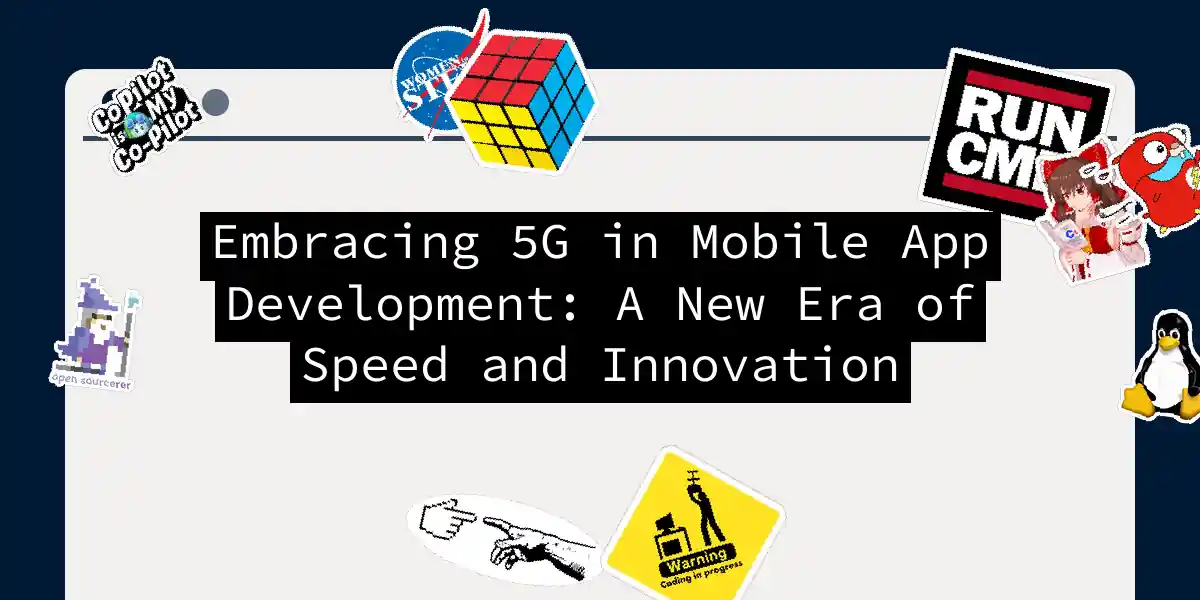The Dawn of 5G: How It’s Revolutionizing Mobile App Development
As we step into the era of 5G, the landscape of mobile app development is undergoing a significant transformation. Imagine a world where your apps load in the blink of an eye, where real-time interactions are truly instantaneous, and where the boundaries between the physical and digital worlds blur seamlessly. This is the promise of 5G, and it’s not just a promise; it’s a reality that’s already shaping the future of mobile app development.
Enhanced Network Speed and Reduced Latency
The most talked-about feature of 5G is its blistering speed and ultra-low latency. Compared to 4G, 5G offers speeds that are up to 100 times faster and latency that is significantly reduced, often to as low as 1 ms[3][4][5].
This means that developers can now create apps that are more data-intensive without worrying about performance issues. For instance, real-time applications such as live-streaming, online gaming, and telemedicine will benefit greatly from these improvements. Here’s a simple flowchart to illustrate how 5G enhances the user experience in real-time applications:
Enabling Complex and Rich Features
With 5G, the possibilities for app features expand exponentially. Augmented Reality (AR) and Virtual Reality (VR) applications, which were previously constrained by network limitations, can now deliver seamless and immersive experiences. Here’s an example of how AR can be enhanced with 5G:
Transforming IoT and Device Interconnectivity
The Internet of Things (IoT) is another area where 5G makes a significant impact. With 5G, more devices can connect to the internet reliably and continuously, enabling smarter and more integrated app ecosystems. This is particularly beneficial for smart home apps, health monitoring systems, and smart cities, where numerous devices need to communicate and operate in sync.
Here’s a sequence diagram illustrating how 5G enhances IoT connectivity:
Implications for App Testing and Development
To fully leverage the potential of 5G, developers need to adapt their testing and development strategies. Here are some key considerations:
- Testing on 5G Networks: Developers must test their apps on 5G networks to ensure they can handle the increased speeds and data throughput without crashing or slowing down.
- Compatibility with 4G Networks: Since 5G is not universally available, apps must also perform well on 4G networks to maintain a broad user base.
- Edge Computing: 5G supports edge computing, which allows data processing to take place closer to the data source, reducing latency and improving app performance[4].
Here’s a class diagram illustrating the integration of edge computing in app development:
Security Enhancements and Challenges
The rollout of 5G also brings enhanced security capabilities, including improved encryption methods. However, the increased number of connected devices also widens the attack surface for malicious activities. Developers must prioritize robust security protocols to ensure data integrity and user privacy.
Here’s a state diagram illustrating the security states in a 5G-enabled app:
Preparing for a 5G-Driven Future
To stay ahead in this new era, developers need to be proactive. Here are some steps to prepare:
- Stay Informed: Keep up with the latest technological advancements and network rollouts.
- Early Access: Partner with network providers for early access to 5G testing environments.
- Workshops and Seminars: Attend workshops and seminars on 5G technology to gain the necessary knowledge and skills.
In conclusion, the impact of 5G on mobile app development is profound and far-reaching. It offers exciting opportunities for innovation, improved user experiences, and new business models. As we embark on this journey, embracing these changes and preparing for the associated challenges will be key to success in the rapidly evolving app development landscape.
So, buckle up and get ready to ride the 5G wave – it’s going to be a wild and wonderful ride
